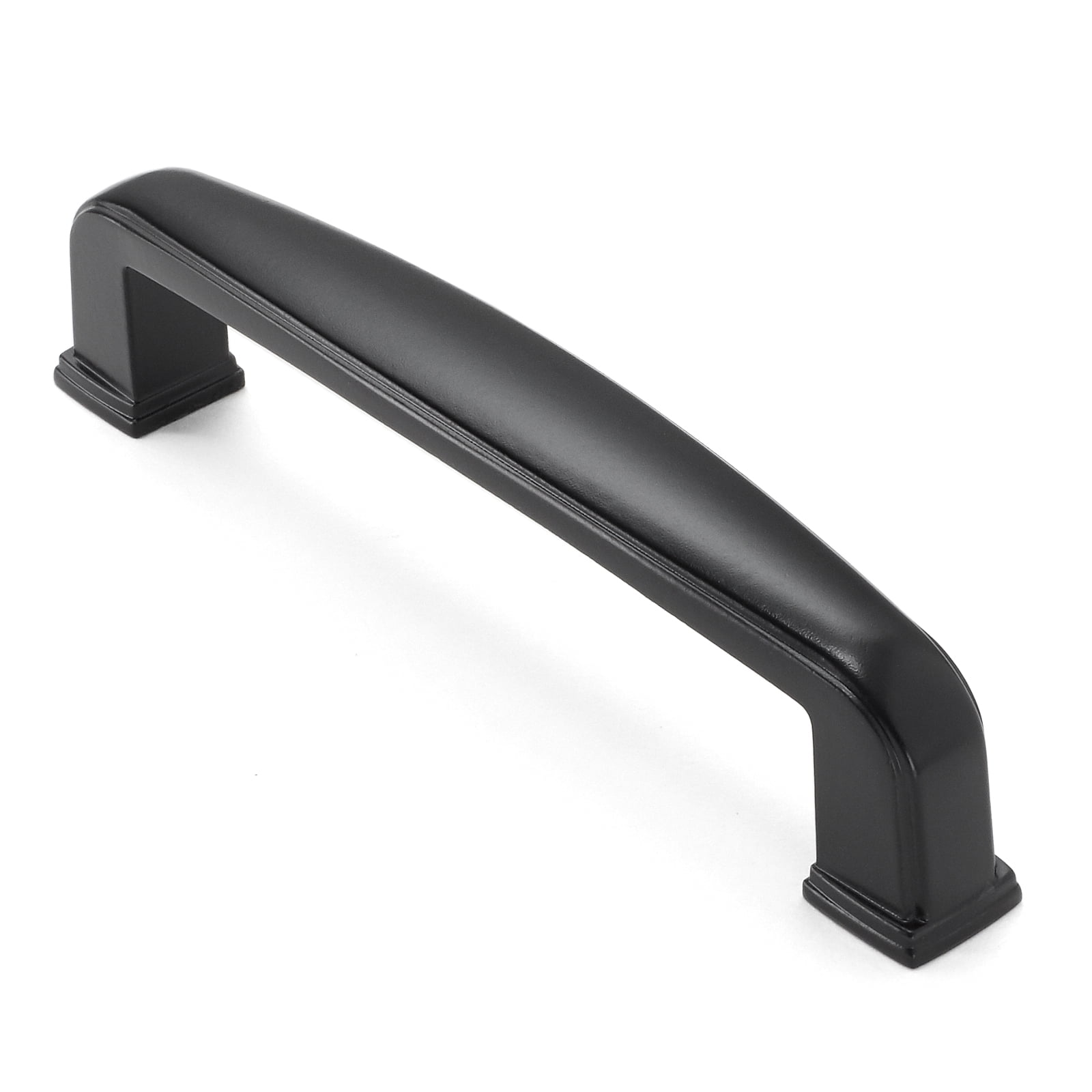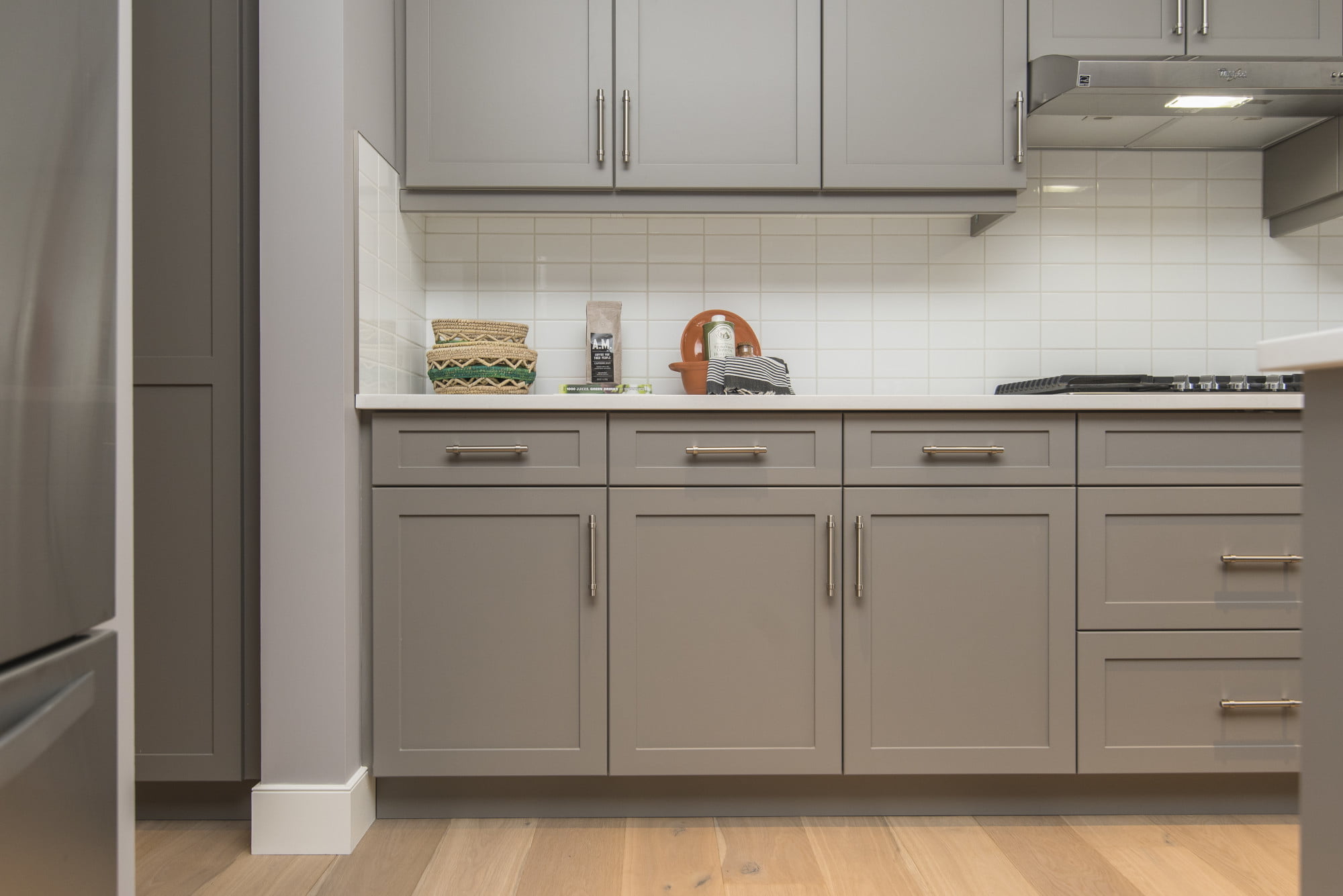Styles and Designs of Black Cabinet Door Handles

Choosing the right cabinet hardware can dramatically impact the overall aesthetic of your kitchen or bathroom. Black cabinet door handles, in particular, offer a versatile and stylish option that complements a wide range of interior design styles. Their sleekness and timeless appeal make them a popular choice for homeowners looking to update their space. This section explores the diverse styles, materials, and design considerations involved in selecting black cabinet door handles.
Variety of Black Cabinet Door Handle Styles
The market offers a broad selection of black cabinet door handles, catering to diverse tastes and interior design preferences. The following table categorizes some popular styles, materials, finishes, and price ranges.
| Style Name | Material | Common Finishes | Typical Price Range (per handle) |
|---|---|---|---|
| Modern | Brushed Nickel, Stainless Steel | Matte Black, Satin Black | $10 – $40 |
| Traditional | Brass, Zinc Alloy | Oil-Rubbed Bronze, Black Nickel | $15 – $60 |
| Rustic | Cast Iron, Wrought Iron | Matte Black, Powder-coated Black | $20 – $70 |
| Minimalist | Aluminum, Stainless Steel | Matte Black, Black Powder Coat | $8 – $30 |
Black Cabinet Door Handles and Interior Design Styles
The selection of a cabinet handle should harmoniously integrate with the existing interior design. Below are examples illustrating the synergy between handle styles and various interior design themes.
Black cabinet door handles – The appropriate handle choice can significantly enhance the overall aesthetic appeal of a room. Careful consideration of the design theme is crucial for a cohesive and visually pleasing result.
- Farmhouse: Black cup pulls or knobs with a slightly distressed finish offer a rustic charm that complements the farmhouse aesthetic.
- Contemporary: Sleek, minimalist bar pulls in matte black create a clean and modern look in contemporary kitchens and bathrooms.
- Victorian: Ornate, detailed knobs or pulls with black finishes add a touch of elegance and sophistication to Victorian-style interiors. These might incorporate intricate designs and materials like brass with a black coating.
Material Comparison of Black Cabinet Door Handles
Different materials offer varying levels of durability, maintenance requirements, and aesthetic appeal. The table below provides a comparison of common materials used in black cabinet door handles.
| Material | Durability | Maintenance | Cost | Aesthetic Appeal |
|---|---|---|---|---|
| Metal (Steel, Brass, etc.) | High; resistant to scratches and dents (depending on the specific metal) | Minimal; occasional cleaning with mild soap and water | Moderate to High | Versatile; can achieve various finishes and styles |
| Plastic | Low; prone to scratches and fading | Easy; wipe clean with a damp cloth | Low | Limited; often lacks the sophisticated look of metal |
| Ceramic | Moderate; resistant to scratches but can chip | Moderate; requires careful handling to avoid chipping | Moderate | Elegant; offers a unique and visually appealing texture |
Functionality and Installation of Black Cabinet Door Handles

Choosing the right cabinet hardware is crucial for both aesthetics and functionality. Black cabinet door handles offer a sleek, modern look, but their successful integration depends on understanding the various mounting mechanisms and handle types available. This section will guide you through the different options, installation processes, and considerations to ensure a smooth and successful project.
Mounting Mechanisms for Black Cabinet Door Handles
Several mounting methods exist for black cabinet door handles, each with its own advantages and installation procedures. Understanding these differences is vital for choosing the right handle for your project and ensuring a secure and aesthetically pleasing installation.
- Screw-on Handles: These are the most common type, featuring screws that pass through the handle and into the cabinet door. Installation involves pre-drilling pilot holes to prevent wood splitting, then securing the handle with screws. Standard screwdrivers are the primary tools needed. This method is straightforward and suitable for most cabinet doors. The screw heads are visible, a factor to consider aesthetically.
- Mortise Handles: Mortise handles are installed by chiseling a recess (mortise) into the door to accommodate the handle’s mechanism. This method offers a cleaner, more integrated look as the handle sits flush with the door surface. Specialized chisels and possibly a router are needed for precise mortise creation. The installation is more complex and requires woodworking skills. This method is less common for cabinet doors compared to screw-on types.
- Concealed Handles: Concealed handles integrate seamlessly into the cabinet door, with only a small portion visible. These often utilize a push-to-open mechanism or a small, recessed grip. Installation requires careful measurement and precise routing or drilling to create the necessary recesses for the mechanism. Specialized tools and possibly a template may be needed, and the installation process is significantly more involved than screw-on handles. This method provides a minimalist and modern aesthetic.
Functionality of Different Handle Types
The choice between knobs, pulls, and bar handles significantly impacts both the aesthetics and usability of your cabinets. Each type offers unique advantages and disadvantages.
- Knobs: Knobs are compact and easy to use, particularly suitable for smaller cabinets or drawers. Advantages include a space-saving design and ease of use. However, they may be less convenient for larger or heavier doors, and their limited grip surface can be less ergonomic for some users.
- Pulls: Pulls offer a larger gripping surface, providing more leverage and ease of opening for heavier cabinet doors. They are versatile and available in various styles and sizes. Disadvantages include potentially taking up more space than knobs, although this is often offset by improved usability.
- Bar Handles: Bar handles combine the ease of use of pulls with a sleek, modern aesthetic. They offer ample gripping surface and are ideal for larger doors or drawers. However, they might not be suitable for all styles of cabinetry, and they can sometimes project further from the door than knobs or pulls.
Step-by-Step Guide for Installing a Black Cabinet Door Handle (Screw-on Type), Black cabinet door handles
This guide focuses on the most common installation method: screw-on handles. Always prioritize safety and use appropriate tools.
- Gather Tools and Materials: You will need the black cabinet door handle, appropriate screws, a screwdriver (Phillips or flathead, depending on the screws), a pencil, a drill with a pilot bit slightly smaller than the screw diameter, and a measuring tape.
- Measure and Mark: Measure the desired placement of the handle on the cabinet door. Mark the locations for the mounting holes with a pencil. Ensure the markings are accurately aligned.
- Pre-Drill Pilot Holes: Use the drill and pilot bit to create pilot holes at the marked locations. This prevents the wood from splitting when the screws are driven in.
- Attach the Handle: Align the handle with the pilot holes and secure it using the provided screws. Tighten the screws firmly, but avoid over-tightening to prevent damage to the handle or the cabinet door.
- Test Functionality: Open and close the cabinet door several times to ensure the handle is securely attached and functions smoothly.
- Troubleshooting: If the handle is loose, check the screws and tighten them. If the pilot holes are too small, use a slightly larger bit to enlarge them. If the handle is misaligned, remove it and re-align it before tightening the screws. If the screws are too long and poke through the door, use shorter screws.
Choosing and Maintaining Black Cabinet Door Handles

Selecting the perfect black cabinet door handles can significantly enhance your kitchen or bathroom’s aesthetic appeal. The right choice complements your existing décor and elevates the overall design. Proper maintenance ensures your handles remain beautiful and functional for years to come.
Selecting Black Cabinet Door Handles
Choosing the ideal black cabinet handles involves careful consideration of several key factors. A well-informed decision ensures a harmonious blend of style and functionality within your space. Follow these steps for a successful selection.
- Assess your cabinet material: The material of your cabinets (wood, metal, etc.) influences the handle style that will best complement them. For example, sleek, modern handles often pair well with contemporary cabinetry, while ornate handles suit traditional styles.
- Consider your overall room design: The style of your handles should align with the overall aesthetic of your room. Modern minimalist handles might clash with a rustic kitchen, while ornate handles might feel out of place in a sleek, contemporary bathroom. Think about the existing color palette, textures, and the overall mood you want to create.
- Choose a handle style: Explore various styles, including knobs, pulls, and bar handles. Consider the size and shape of the handles in relation to the size of your cabinet doors. Overly large handles on small doors can look disproportionate, while tiny handles on large doors can appear insignificant.
- Evaluate handle finish: While you’ve chosen black, different finishes exist—matte black, brushed black, polished black—each offering a unique visual impact. Matte black offers a subtle sophistication, brushed black adds texture, and polished black provides a sleek, high-gloss look. The chosen finish should complement the existing hardware and fixtures in the room.
- Check the handle’s material: Black handles are made from various materials, including metal (steel, zinc alloy, brass), ceramic, and plastic. Metal handles are durable and often more resistant to damage but may require more care to prevent tarnishing. Consider the durability and maintenance requirements of the material before making your selection.
Cleaning and Maintaining Black Cabinet Door Handles
Regular cleaning and maintenance prevent tarnishing, corrosion, and damage, preserving the beauty and functionality of your black cabinet handles. Appropriate cleaning methods vary depending on the handle’s material.
Here are some effective cleaning methods:
- For metal handles: Use a soft, damp cloth with a mild dish soap solution. Rinse thoroughly and dry immediately to prevent water spots. Avoid abrasive cleaners or scouring pads, which can scratch the surface. For stubborn marks, a specialized metal cleaner may be necessary. Always test any cleaner on an inconspicuous area first.
- For ceramic handles: Clean with a soft cloth and warm, soapy water. Avoid harsh chemicals that can damage the finish. For stubborn stains, a paste of baking soda and water can be gently applied, then rinsed and dried.
- For plastic handles: Use a damp cloth with a mild soap solution. Avoid abrasive cleaners or excessive scrubbing, which can dull the finish. A quick wipe down with a slightly damp cloth is usually sufficient for daily cleaning.
